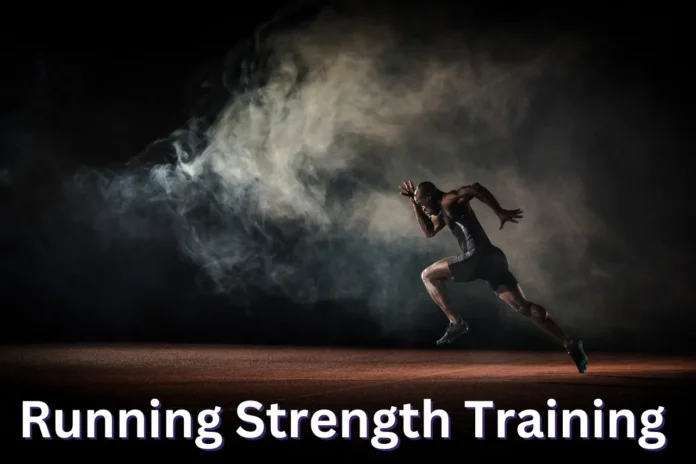Introduction:
Strength training for triathletes is essential to any triathlon training program. While endurance training forms the foundation, incorporating strength workouts can significantly boost overall performance in swimming, cycling, and running. Effective strength training for triathletes helps increase power, improve efficiency, and reduce the risk of injury, ultimately enhancing endurance, speed, and resilience. This article will outline 10 powerful strength training tips to help triathletes elevate their performance across all three disciplines.
Table of Contents
Jump to Sections:
- Focus on Functional Strength Training
- Strengthen Your Core for Stability
- Incorporate Plyometrics for Explosive Power
- Address Muscle Imbalances
- Prioritize Mobility and Flexibility
- Focus on Recovery and Injury Prevention
- Train in Different Planes of Motion
- Build Endurance with High-Rep, Low-Weight Training
- Integrate Sport-Specific Strength Workouts
- Periodize Your Strength Training Program
- Conclusion
1. Strength training for triathletes
should prioritize functional movements that mimic the motions involved in swimming, cycling, and running. Unlike traditional bodybuilding, which focuses on isolating muscles, functional training targets multiple muscle groups and joints to improve overall performance in triathlons. These exercises replicate the specific motions used in each discipline, allowing athletes to train more effectively.
For instance, exercises such as medicine ball slams, rotational core work, and lat pull-downs engage the muscles used in swimming. Lunges, deadlifts, and squats help strengthen the quads, glutes, and hamstrings to enhance cycling. Single-leg squats and step-ups are essential for improving balance and leg strength, benefiting your running form and stamina.
Exercises to Try:
- Squat-to-press: Develops full-body strength and stability.
- Russian twists: Enhances core strength and rotational power for swimming.
- Single-leg deadlifts: Improves balance and strengthens the posterior chain for cycling and running.
2. Strengthen Your Core for Stability
A strong core is crucial for triathletes in all disciplines. Whether you’re swimming through waves, maintaining posture on the bike, or holding good form during a run, core stability is key. Building core endurance through strength training for triathletes helps prevent injuries and ensures efficient movement throughout a race.
Incorporating exercises like planks, side planks, and bird dogs into your strength routine will reinforce your core muscles, enabling you to maintain proper form over long distances and avoid common issues like lower back pain.
Core Exercises to Include:
- Plank variations (front, side, reverse) Improve core stability.
- Bird-dogs: Enhance coordination and core control.
- Cable woodchoppers: Build rotational strength, essential for swimming.
3. Incorporate Plyometrics for Explosive Power
Plyometric exercises, often called jump training, are highly beneficial for triathletes aiming to boost speed and power in short bursts. Integrating plyometric movements like jump squats and box jumps into your strength training for triathletes helps develop fast-twitch muscle fibres, which is critical for sprinting and quick transitions during races.
Plyometrics build explosive strength, aiding faster transitions between swimming, cycling, and running. They are especially useful for climbing hills, accelerating out of the water, or sprinting to the finish line.
Plyometric Exercises to Try:
- Box jumps: Increase leg power and coordination.
- Jump squats: Build explosive strength in the lower body.
- Burpees: Enhance cardiovascular endurance while developing full-body strength.
4. Address Muscle Imbalances
Triathletes often develop muscle imbalances due to the repetitive nature of their training. For instance, cyclists may have strong quadriceps but weaker hamstrings, while swimmers may have powerful shoulders but underdeveloped lower bodies. These imbalances can lead to inefficient movement and increase the risk of injury.
To correct muscle imbalances, incorporate unilateral exercises that target one side of the body at a time. Strengthening both sides evenly through exercises like single-leg deadlifts, split squats, and single-arm rows will improve overall efficiency in triathlon performance.
Unilateral Exercises to Include:
- Single-leg squats: Promote balanced strength in the legs for cycling and running.
- Single-arm dumbbell row: Enhances upper body balance for swimming.
- Split squats: Correct side-to-side strength discrepancies.
5. Prioritize Mobility and Flexibility
Maintaining flexibility and mobility is essential for triathletes to perform efficiently and avoid injuries. Incorporating dynamic stretching and mobility exercises into your strength training for triathletes program helps prevent muscle stiffness and ensures a full range of motion in your joints.
For example, dynamic hip flexor stretches benefit cyclists and runners, while swimmers can improve shoulder mobility with exercises like shoulder dislocations. Regular foam rolling, yoga, or Pilates are also effective for enhancing flexibility and stability.
Mobility Exercises to Include:
- Dynamic hip flexor stretches: Improve flexibility for cycling and running.
- Shoulder dislocations (with resistance bands): Increase shoulder mobility for swimming.
- Foam rolling: Releases muscle tightness and aids recovery.
6. Focus on Recovery and Injury Prevention
Strength training improves performance and plays a key role in injury prevention for triathletes. Incorporating exercises that strengthen stabilizing muscles around vulnerable joints can help protect against overuse injuries. For example, glute bridges and clamshells strengthen the hip abductors and glutes, preventing knee pain and IT band issues in runners.
Active recovery techniques, such as foam rolling and stretching, promote muscle recovery and reduce soreness between training sessions, ensuring consistent progress.
Recovery and Prehabilitation Exercises:
- Glute bridges: Strengthen the glutes and reduce lower back strain.
- Resistance band lateral walks: Strengthen hip stabilizers to prevent knee pain.
- Foam rolling: Aids recovery by improving muscle circulation.
7. Train in Different Planes of Motion
Triathletes predominantly move in the sagittal plane (forward and backward motions), but training in multiple planes of motion can enhance overall athleticism and reduce injury risks. Incorporating exercises that target lateral and rotational movements into your strength training for triathletes routine will improve agility, balance, and coordination.
Multi-Plane Exercises to Try:
- Lateral lunges: Strengthen hips and improve balance.
- Side planks with leg lifts: Engage core and hip muscles for stability.
- Rotational medicine ball throws: Build rotational power for swimming and cycling transitions.
8. Build Endurance with High-Rep, Low-Weight Training
Building muscular endurance is crucial for triathletes, ensuring muscles can sustain long efforts without fatigue. Incorporating high-rep, low-weight exercises into your strength training routine helps improve endurance, making your muscles more resistant to fatigue over extended periods.
High-Rep Exercises to Incorporate:
- Bodyweight squats: Enhance leg endurance for cycling and running.
- Push-ups: Develop upper-body endurance for swimming.
- Walking lunges: Strengthen the lower body and improve balance.
9. Integrate Sport-Specific Strength Workouts
Tailoring your strength training for triathletes to focus on the specific demands of each sport will optimize your performance. For swimming, emphasize upper-body strength with exercises like pull-ups and lat pull-downs. For cycling, focus on leg strength with deadlifts and squats. You are running benefits from lower-body exercises like single-leg squats and step-ups.
Sport-Specific Strength Exercises:
- Pull-ups and lat pull-downs for swimming: Build upper-body strength and swimming power.
- Deadlifts and squats for cycling: Develop lower-body power for efficient pedalling.
- Single-leg squats for running: Improve balance, strength, and running efficiency.
10. Periodize Your Strength Training Program
Periodization is key to ensuring your strength training for triathletes aligns with your race schedule. Periodize your training by adjusting intensity, volume, and exercises throughout the year. Focus on building general strength during the off-season and shift toward more sport-specific, endurance-focused strength work as the race season approaches.
Conclusion:
Incorporating strength training for triathletes is essential for improving performance in all three triathlon disciplines—swimming, cycling, and running. By following these 10 powerful tips, you’ll develop functional strength, power, and endurance, allowing you to excel on race day. Remember to stay consistent, listen to your body, and prioritize recovery to ensure long-term progress and avoid injuries. You’ll unlock your full potential as a triathlete with the right balance of strength and endurance training.




